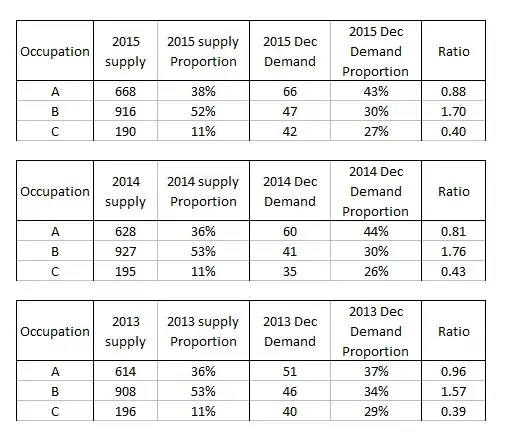The two density plots are of sliding window data, each window contains x occurrences in a window size of 2000, with the x-axis representing a percentage (x/2000*100). I want to test whether these two samples (blue n=20000, red n=250) are from the same population (and that the red group has a high(er) associated percentage based on a low p-value).
The distributions are not normal and have a different shape (according to KS test), so I think this rules out using the Wilcoxon rank sum test. The sliding window can become 100% saturated, hence the increased density towards 100%.
Questions:
Is there a test (alternative to wilcox test) to look for a significant difference between these two samples, given that the distributions have different shapes?
I realise the distributions look a little odd, due to the saturation of the windows, is this a problem? I used sliding windows to increase the sample size, e.g. instead of in the n=250 (red) sample using one percentage (e.g. 67%) over 100000, I used windows of 5000, since wilcox(blue_data, 67) with a single value would have little power.
Is it a problem that the data is percentages? I read that percentages can be treated as continuous in some cases, but I am not sure if that is the case here (perhaps this is count data?). I used from=0 and to=100 parameters for the density() function in R, but not sure if density of % data is OK.
I realise the wording of this might not be the best, but hopefully someone can steer me in the right direction.
